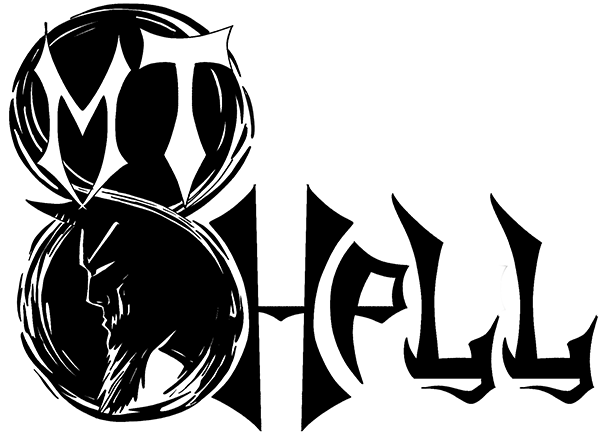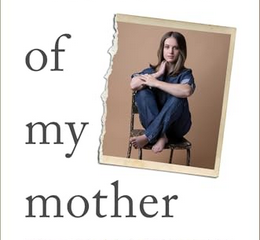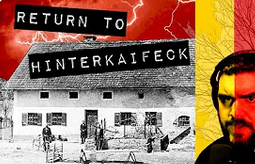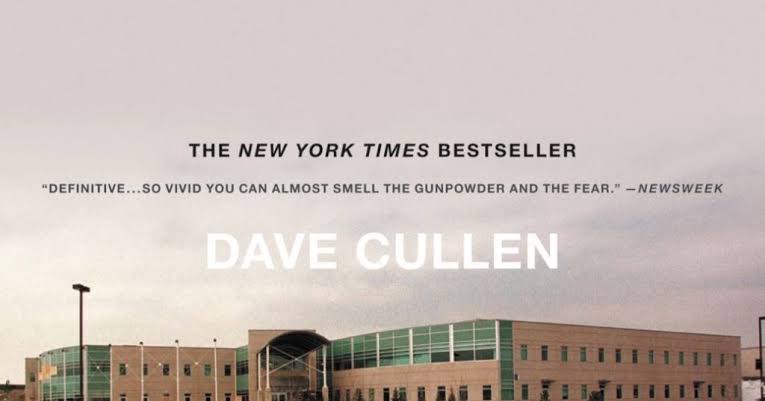
True Crime Studies: Columbine by Dave Cullen
Incredibly vivid, heavily detailed, brilliantly written and fast-paced, Columbine is one of the best true crime books I’ve ever read. Written like a thriller, Dave Cullen, one of the first reporters on the scene that day, covers everything to possibly know about the Columbine massacre that took place on the morning of April 20, 1999, carried out by high school students Eric Harris and Dylan Klebold. The book covers three major events: the evolution of the attack stretching out two years, the attack itself, and the aftermath that spans over the next decade.
There is honestly way too much to dissect for a simple analysis or review. To cover all of it I’d need to write a full-length essay. In short, it’s a true crime masterpiece that hits you hard in the chest. A large portion is dedicated to the survivors of the attack. Not just those in the school but the families of the thirteen. Cullen takes you along their recovery stories, particularly Patrick Ireland’s and Valeen “Val” Schnurr’s who pop in and out of the narrative as if to lend readers their resilience when things get too heavy.
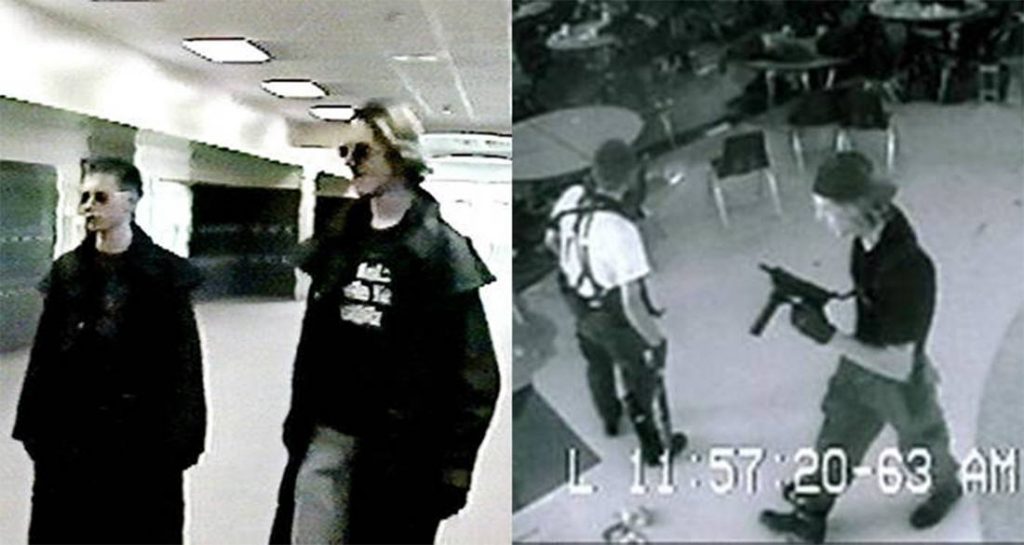
The description of the attack itself is harrowing. Cullen’s words chase you down like that junkyard owner in Stand by Me, hitting you over the head with a rock in his dirty hand. Before I picked up the book I already knew a lot about the attack, that the bulk of it ended after about 17 minutes, that Eric and Dylan ended their own lives and that there were 13 victims, and yet I was biting my nails the whole time. Subject matter aside, it’s clear that Cullen is a phenomenally talented writer. He puts you in the moment. You’re there at Columbine not only living the event but watching it unfold.
You can hear the police sirens, the blaring fire alarm honking for hours, and feel the quaking rattle of the gunshots. It’s graphic and violent, every survivor shares a bit of the story so that readers get a full picture of that day, including the image of Eric smiling as he shoots through a glass door at a teacher and the slow, agonizing death of Dave Sanders.
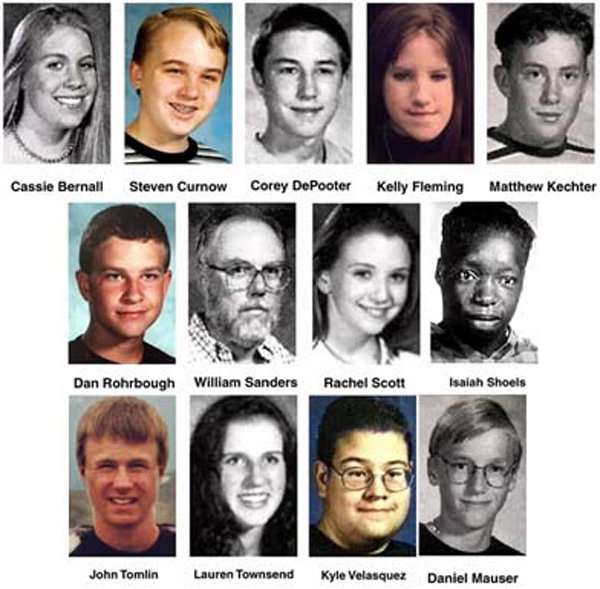
Debunking the myths of Columbine
It’s easy to tell that Columbine started from Dave Cullen’s desire to set the record straight. Facts about the massacre have never been 100% accurate, starting from contradicting personal statements to the first blundered press conference. Rumors have taken on a life of their own, becoming facts in the eyes of the public.
The biggest myth about the attack was that had to do with the toxic atmosphere at Columbine High. If you browse the internet you’ll find many Tumblr and Reddit posts featuring “evidence” of the harassment Eric and Dylan supposedly faced at their school. Cullen addresses these claims by saying that they were largely made by those who didn’t know the boys and were projecting hateful comments onto their characters post-mortem. Friends of Eric and Dylan have repeatedly refuted these claims, that they never knew either one to suffer at the hands of bullies.
The myth comes from our desire to give reason to such an event. Anything that would neatly wrap up the blame in a box and shape it into something acceptable. There was no obvious motive so people created one they could understand but even after all these years, the world is still bewildered. It’s just as Eric predicted:
“The majority of the audience won’t even understand my motives either. All you f***ers should die! DIE!”
Passage taken from Eric Harris’s journal, The Book of God
The motive of the psychopath
Warning. I am a major nerd for psychopathology so this section is a lot of rambling.
The psychology of Eric Harris and Dylan Klebold is what inspired me to pick up this book. Anyone interested in the same should definitely give it a try. There is an amazing chapter in Columbine that works at explaining not only Eric but the reason why he and Dylan were a pair because, as most true crime enthusiasts know, most killers work alone.
Page 239, “Chapter 40: Psychopath.” Easily my favorite chapter of the whole book. It explains the reason why people such as Eric grow attached to people such as Dylan and why both committed the crime.
Psychopaths crave constant stimuli. They can’t feel or experience emotion the same way as everyone else yet they crave it. They’re aware of that spark they’re missing and often seek it out elsewhere. Usually, they find it in rushes of adrenaline or in the presence of explosive individuals, and Dylan Klebold was Eric’s explosive individual. Prone to impulsive fits of rage, Dylan ran hot and cold all at once. He was packed to the brink with raw emotion which made him incredibly stimulating to someone like Eric- a textbook psychopath who struggled to feel even a flicker of anything.
“The psychopath is in control, of course, but the hotheaded sidekick can sustain his excitement leading up to the big kill. ‘It takes heat and cold to make a tornado, ‘ Dr. Fuselier is fond of saying. Eric craved heat, but he couldn’t sustain it. Dylan was a volcano. You could never tell when he might erupt. Day after day, for more than a year, Dylan juiced Eric with erratic jolts of excitement. They played the killing out again and again: the cries, the screams, the smell of burning flesh… Eric savored the anticipation.”
Columbine pg. 244
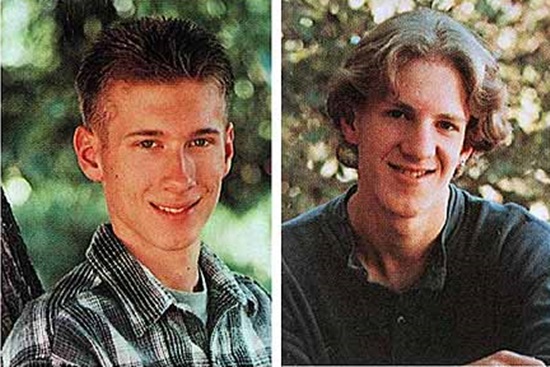
A psychopath is not the Michael Myers type of killer most of us associate with the word. Their actions are used to meet specific goals. In Eric’s case, it was fame or rather, recognition. Columbine was a performance and the public was the audience. The objective was to leave a mark on the world. Just a single glimpse at Eric’s journal “The Book of God” shows how hungry he was for recognition. Not companionship or even success, but acknowledgment of his superiority. The kid really thought himself a god.
The hard truth of it is, Eric and Dylan walked into Columbine that day with no targets in mind despite their different objectives. Eric wanted mass extermination and fame and Dylan wanted suicide.
Final verdict
The attack didn’t happen out of the blue. There is a gradual buildup as well as some concerning red flags. As it turns out, there were MANY chances to stop Columbine. At least a year before the attack, multiple complaints were filed against Eric for threatening behavior and the reported detonating of crude bombs in isolation areas. Even more shocking is how Dylan attempted to warn several people! He hinted at the attack on several occasions, warned Eric’s neighbor (a boy who Eric sent repeated death threats to) about Eric’s desire to kill, and wrote a short story for class that appeared to be a foretelling of the attack just months earlier. It was as if he was begging someone to stop them. But of course, no one did.
We’ll probably never have the full story about what happened at Columbine. There are only two people who know the truth and they both took their own lives. They robbed the world of ever knowing the truth and so now, we do our best to fill in the blanks. As I said, there is a lot covered in Columbine. It does its very best at giving you the full picture or rather the picture that Dave Cullen has discovered for himself. Even if you don’t agree with his account, Columbine is still an incredible read.
 (5 / 5)
(5 / 5)
Book Reviews
A Stellar Debut Novel, We Used To Live Here
Imagine this. You’re home alone, waiting for your partner to return, when you hear a knock on your door. You answer it to see a family of five, bundled up against the cold. The father, a kindly older gentleman, explains that he used to live in this house as a boy. And he would love to show it to his family.
Do not let them in.
The story
Released in June 2024, We Used To Live Here is author Marcus Kliewer’s debut novel. It tells the story of Eve, who just purchased a beautiful house with her partner, Charlie. Their plan is to flip the house and sell it.
One night, while waiting for Charlie to come home, Eve is surprised by a knock at the door. It’s a man named Thomas Faust and his family.
Thomas explains that he grew up in the house and hasn’t been in the area in years. Would Eve let them in so that he can show the home to his children?
Against her better judgment, Eve lets them in. She regrets this almost at once when Thomas’s daughter vanishes somewhere into the house.
What worked
I always appreciate a book that allows you to play along with the mystery. And this book does that better than just about any other I’ve seen.
Pay close attention to the chapters, to the words that aren’t there. To everything about this novel.
This is mostly down to Kliewer. This is ultimately his work of art. But the production value is also fantastic. I don’t want to ruin the multiple mysteries, so I’ll just say this. There are clues in this book that require some specific artistic choices in the page layouts in this book. And I loved that.
If you’d like to experience another horror book review, check out this one.
We Used To Live Here is also the kind of story that makes you question everything right along with the main character, Eve. Eve is a great main character. But she might be an unreliable narrator. She might be experiencing every single horror described, exactly as it’s described. Or, she might be having a psychotic breakdown. Through most of the book, we can’t be sure. And that is so much fun.
Finally, the weather plays a large part in this story. There are several stories in which the weather or the land itself could be considered a character. Even an antagonist. This is certainly one. The winter storm is the thing that traps the family in the house with Eve. It also makes escaping the home difficult. Reading this book during the winter was especially impactful. Most of us know what it feels like to be shut in by a storm. I’ve personally lived through some of those storms that are just referred to by their year, as though they were impactful enough to claim the whole 365 days for themself. And that was with people I liked. Imagine what it would feel like with strangers. It’s a staggering thought and one that we explore in depth in this book.
In the end, We Used To Live Here is a fantastic book. It’s the sort of story that sneaks into your brain and puts down roots. And if this is just the first book we’re getting from Kliewer, I can’t wait to see what else he comes up with.
 (5 / 5)
(5 / 5)
Book Reviews
Exploring real terror with The House of My Mother
As a disclaimer, this is a review of The House of My Mother from a critical perspective. I will not be discussing my opinions of the legal case against Ruby Franke and Jody Hildebrandt. I will be discussing the merits of the book as a work of true crime alone.
In 2015, Ruby Franke started a YouTube channel called 8 Passengers. In August of 2023, Franke and her business associate Jodi Hildebrandt were arrested for, and later plead guilty to, charges of aggravated child abuse. And in January of this year, Shari Franke told her story in The House of My Mother.
The story
The House of My Mother is the true story of Shari Franke, the oldest child of one of the most famous family vlogger families.
As a child, Shari came to the conclusion that her mother didn’t like her. Soon, she began to fear her mother’s anger.
Things got significantly worse when Ruby started their family vlog. All of the families most intimate moments were splashed across the internet for anyone to watch. This became a living nightmare for Shari.
Of course, that was only the start of the family nightmare. Because Ruby was about to meet someone who would reinforce all of the darkest parts of herself.
Eventually Shari manages to escape her home. But her younger siblings were still in her mother’s clutches. She had to save them, and her father, from the monster her mother had become.
What worked
Through the book, Shari only ever mentions the name of one of her siblings, Chad. This is because Chad is the only of her siblings that is an adult at the time of the publication.
There are children involved in this story. Children who’s lives and privacy have already been damaged. Shari didn’t want to do that to them again, and neither do I.
It probably won’t surprise you that this book is full of upsetting details. But not in the way you might imagine.
Nowhere in this book will you find gory details about the abuse the Franke kids suffered. And I consider that a good thing. Those sort of details are all fun and games when we’re talking fiction. When it’s real kids who are really living with the damage, it’s not a good time.
What you’ll find instead is a slew of more emotionally devastating moments. One that stuck with me is when Ruby’s mother gives her a pair of silk pajamas as a gift after Ruby gave birth to one of her babies. Shari asks Ruby if she’d bring her silk pajamas when she had a baby. Ruby responds that yes, when Shari becomes a mother they can be friends.
What a lovely way to make a little girl feel like she’s not worth anything unless she reproduces. And, if she does decide to have children, who is going to bring her silk pajamas?
In the end, this isn’t a story about ghosts or demons. It’s not about a serial killer waiting on a playground or in the attic of an unsuspecting family. Instead, this is a story about things that really keep us up at night. It’s the story of a woman so obsessed with perfection that she drove away her eldest daughter. The story of a young woman who’s forced to watch from afar as her beloved brothers and sisters are terrorized and abandoned. These are the sorts of things that really keep us up at night. These are the real nightmares.
More than that, though, The House of My Mother is a story of survival. It’s about a family that was ripped apart and somehow managed to stitch itself back together again. It’s about a brave young woman who managed to keep herself safe and sane in the face of a nightmare. If you haven’t read it yet, I can’t recommend it enough.
For more like this, check out my review of Shiny Happy People.
 (5 / 5)
(5 / 5)
Book Reviews
Book Review of Boreal: an Anthology of Taiga Horror

Boreal: an Anthology of Taiga Horror is a collection of twenty-two haunting tales that dwell in the deepest darkest woods and frozen wastelands, edited by Katherine Silva and including Haunted MTL’s very own Daphne Fauber. Each story has even been gifted with its very own poster, hinting at the horrors to be found within it, bestowing a beautiful visual collection as well.
The tales are varied and touch upon the environment in new and different ways, each hearkening to a sort of epiphany or raised awareness. These stories exude both dread and wonder at the smallness of our human existence in contrast to the sacred world we have isolated from, sheltering ourselves in our comfortable houses with centralized heat and everything we could possibly need or want at the ready. The taiga becomes a sanctuary outside of our own dulled awarenesses. It is a holy place imbued with powers beyond mortal human reach, a wilderness that threatens to swallow us – both whole and bit by bit, simultaneously.
The protagonists enter into this realm through ritual, superstition, longing, stubbornness, and their own hubris – yearning to survive its dangers, and to make their own marks upon it. The starkness of their surroundings harbors delicate moments that would be all too easily missed if not deliberately sought or pointed out. The softness of fur, the dappled sunlight shining through trees, the hazy clouds of breath forming in crisp air, the brittleness of bleached bone… those quiet experiences that beg to be forgotten, to lay safely sleeping just below the frozen surface, awaiting spring.
There are those who followed in the footsteps of their predecessors, seeking to escape the constraints of their parent’s and elders’ indoctrination, traditions, madness, and abuse, yearning to find their own way despite also being inextricably bound to their own pasts. There are those who just wanted to go for a walk in the woods, and remained forever changed by what they experienced. There are those who wished to impose their will upon the wilderness, their order falling to disarray, unable to make lasting impact. There are those who sought to leave behind the world of mankind, looking for oneness in the natural order of things through isolation, leaving a bit of themselves behind after being consumed by the terrors they encountered. There are those who truly found communion with the woods, became one with its wildness, and invited its spirit into their hearts to find peace, even at cost of their own lives. And then, there are the spirits themselves…
 (3 / 5)
(3 / 5)
All in all, I give Boreal: an Anthology of Taiga Horror 3.0 Cthulhus. I love existential angst so I found it to be an enjoyable read, and I appreciated the myriad manners in which the biome was explored. But there were points in which I found myself struggling to follow along, as if the words were swept up into their own wilds in ways that alienated myself as reader, as if my mere voyeurism into this otherworldly place was not enough to comprehend the subtle deviations in storytelling mannerisms fully. I suppose in some sense this seems appropriate, but at the same time, it left me feeling a bit unfulfilled, as if I had missed a spiritual connection that should have resonated more deeply.

